When MTV launched on August 1, 1981, with the prophetic “Video Killed the Radio Star” by The Buggles, nobody could have predicted how completely it would transform not just music, but pop culture as a whole. For those lucky enough to have cable television in the 1980s, MTV wasn’t just a channel—it was a cultural revolution that demanded your attention and created shared experiences for an entire generation. Before social media, before YouTube, before smartphones, there was that moment when your friend would call your landline screaming “Turn on MTV right now!” and you’d race to the television, desperate not to miss whatever groundbreaking visual or shocking moment was unfolding. Here are twelve unforgettable MTV moments from the ’80s that stopped us in our tracks and became instant generational touchstones.
1. Michael Jackson’s “Thriller” World Premiere (1983)
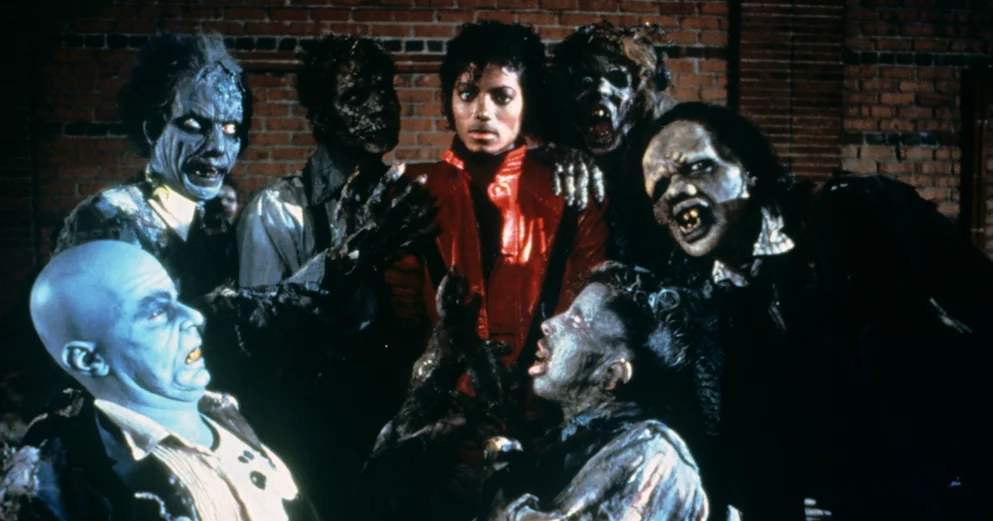
When MTV announced the worldwide premiere of Michael Jackson’s “Thriller” video, young people across America rescheduled their lives to ensure they wouldn’t miss the 14-minute horror movie disguised as a music video. Director John Landis (fresh from “An American Werewolf in London”) brought Hollywood production values to the medium, complete with dialogue sections, Vincent Price’s iconic voiceover, and the most elaborate choreography ever seen in a music video. Families gathered around television sets as though witnessing a historic event—which, in retrospect, they absolutely were—as the King of Pop transformed into a werewolf and led zombies through dance routines that would be imitated at school dances for decades. Far Out Magazine writes that, decades later, there are still a lot of complex topics to unpack when it comes to this production.
The video’s premiere was promoted with the intensity of a major film release, creating unprecedented anticipation that paid off spectacularly when viewers witnessed Jackson’s yellow werewolf eyes and the now-legendary dance sequence. MTV played “Thriller” twice an hour to meet viewer demand, effectively turning the channel into all-Michael-all-the-time and cementing the network’s power to make or break artists. The cultural impact was so immense that the Library of Congress would later add “Thriller” to the National Film Registry—the only music video ever to receive this honor—recognizing a moment when a music video transcended its medium to become a legitimate cinematic achievement that stopped America in its tracks.
2. The Debut of “Yo! MTV Raps” (1988)
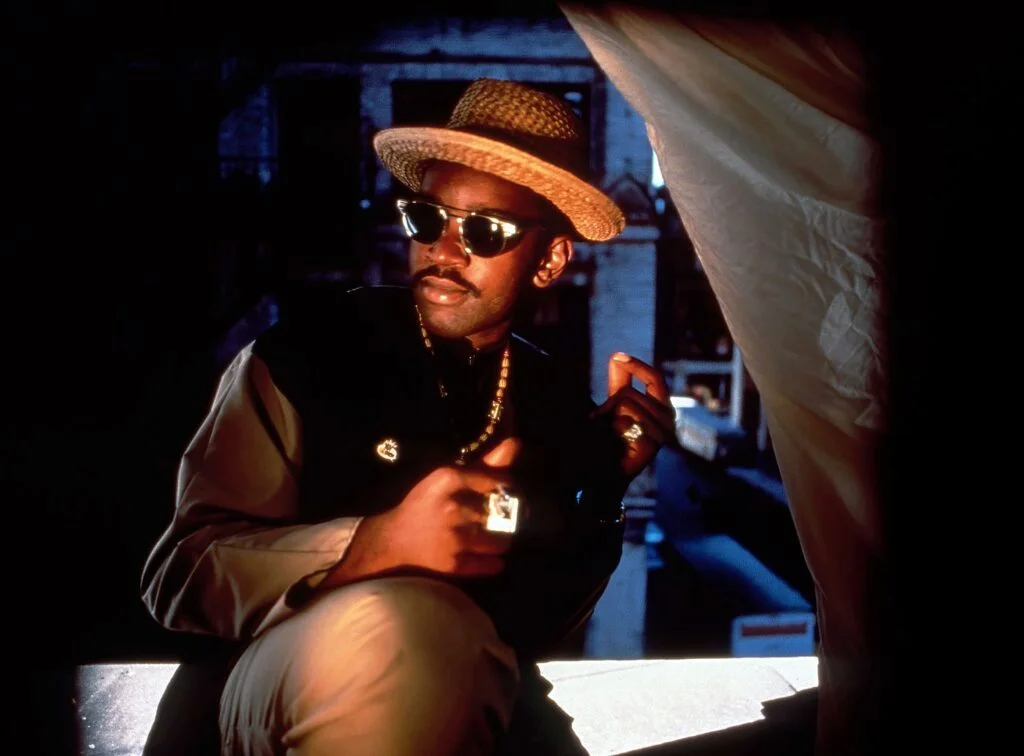
When “Yo! MTV Raps” premiered with host Fab 5 Freddy (later joined by Ed Lover and Doctor Dré), it represented mainstream television’s first serious acknowledgment of hip-hop culture and instantly became appointment viewing for fans across America. The show shattered MTV’s reputation for rock-centric programming and provided millions of suburban viewers their first authentic exposure to rap music, breaking artists like Public Enemy, N.W.A, and A Tribe Called Quest to audiences who would never have discovered them through traditional radio. For young hip-hop fans, especially those outside urban centers, the show’s debut meant no longer having to hunt for rare videos or recordings—suddenly the culture they loved was being broadcast directly into their living rooms with legitimacy and respect. Revolt also notes that, among this highlighted moment in MTV history, there are moments within “Yo! MTV Raps” that deserve a special shoutout.
The program showcased not just music videos but elements of broader hip-hop culture including graffiti art, fashion, and dance, educating a generation about a cultural movement that would soon dominate global entertainment. MTV executives initially doubted hip-hop’s mainstream appeal but were quickly convinced as “Yo! MTV Raps” became one of the network’s highest-rated programs, regularly drawing millions of viewers across demographic and geographic lines. The show’s success played a crucial role in transforming hip-hop from a primarily New York and Los Angeles phenomenon into a nationwide cultural force, with viewers in towns across America suddenly sporting Cross Colours clothing and memorizing lyrics from artists whose concerts would never reach their communities.
3. Live Aid Global Broadcast (1985)
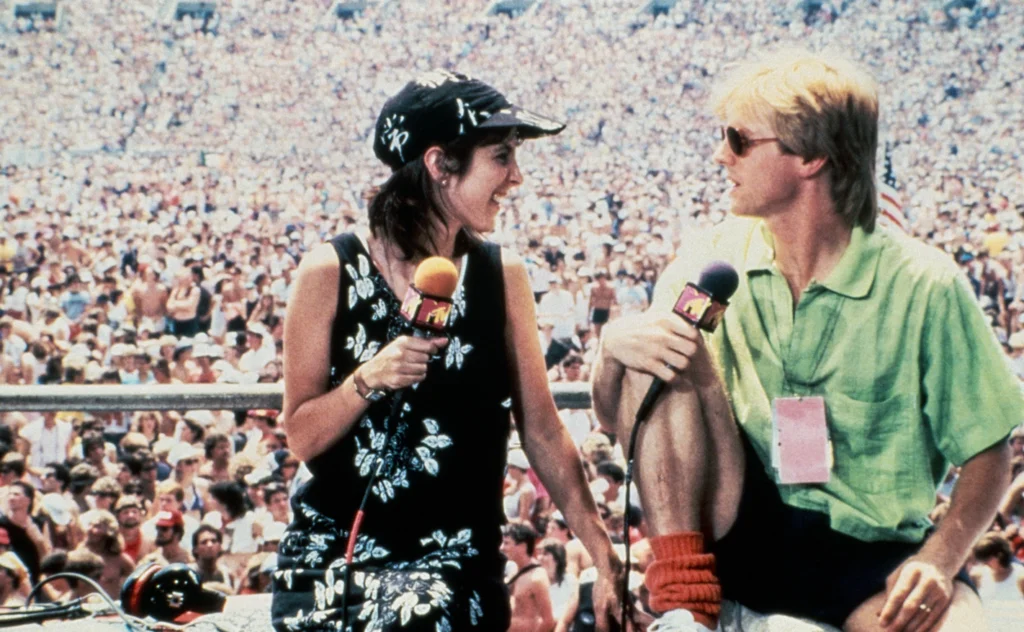
When MTV joined the global broadcast of Live Aid on July 13, 1985, it transformed what could have been just another charity concert into a generation-defining moment that demonstrated television’s power to unite the world for a common cause. For over 16 hours, MTV suspended regular programming to broadcast performances from London’s Wembley Stadium and Philadelphia’s JFK Stadium, creating the first true global concert experience and raising unprecedented awareness about Ethiopian famine relief. The channel’s young viewers, many experiencing their first major charitable awakening, stayed glued to their screens for performances that ranged from Led Zeppelin’s reunion to Run-DMC’s groundbreaking hip-hop set, understanding they were witnessing not just great music but a pivotal moment in humanitarian history. As written by Old Vic Theatre, there’s a fascinating history behind Live Aid itself.
Queen’s performance became the day’s most iconic segment, with Freddie Mercury commanding the 72,000-person Wembley crowd through an electrifying 20-minute set that included “Radio Ga Ga,” “Hammer to Fall,” “Crazy Little Thing Called Love,” and the spine-tingling “We Are the Champions.” MTV’s coverage allowed American viewers to witness Mercury’s masterclass in stadium performance as he led the massive crowd through the now-legendary call-and-response sections that demonstrated his unmatched ability to connect with audiences of any size. The entire broadcast raised over $125 million for famine relief, proving MTV could be more than just music videos and demonstrating how the network had become the primary cultural connector for young people around the world.
4. Madonna’s VMA Performance of “Like a Virgin” (1984)

When Madonna emerged from a 17-foot wedding cake at the first Video Music Awards, dressed in a wedding gown complete with “Boy Toy” belt buckle and writhed across the stage, it wasn’t just a performance—it was a declaration that female artists could control their own image and narrative. The provocative routine, which included Madonna rolling energetically across the floor and striking poses that made network executives nervous, established her as music’s premier provocateur years before artists like Lady Gaga would follow her boundary-pushing template. Teenagers everywhere were transfixed by her audacity, while parents across America suddenly developed strong opinions about this new blonde sensation who seemed determined to challenge every notion of how young women should behave.
The performance achieved exactly what Madonna intended—everyone was talking about her the next day, from playground discussions to heated debates on talk shows about the appropriateness of her suggestive routine. MTV initially worried the performance might be too risqué but quickly realized they had captured lightning in a bottle as ratings soared and Madonna became the network’s first female superstar. The symbiotic relationship between Madonna and MTV was cemented in this moment—she understood the visual medium better than any of her contemporaries, and MTV provided the perfect platform for her carefully constructed provocations that always stopped just short of what censors would prohibit.
5. Run-DMC and Aerosmith’s “Walk This Way” Video (1986)
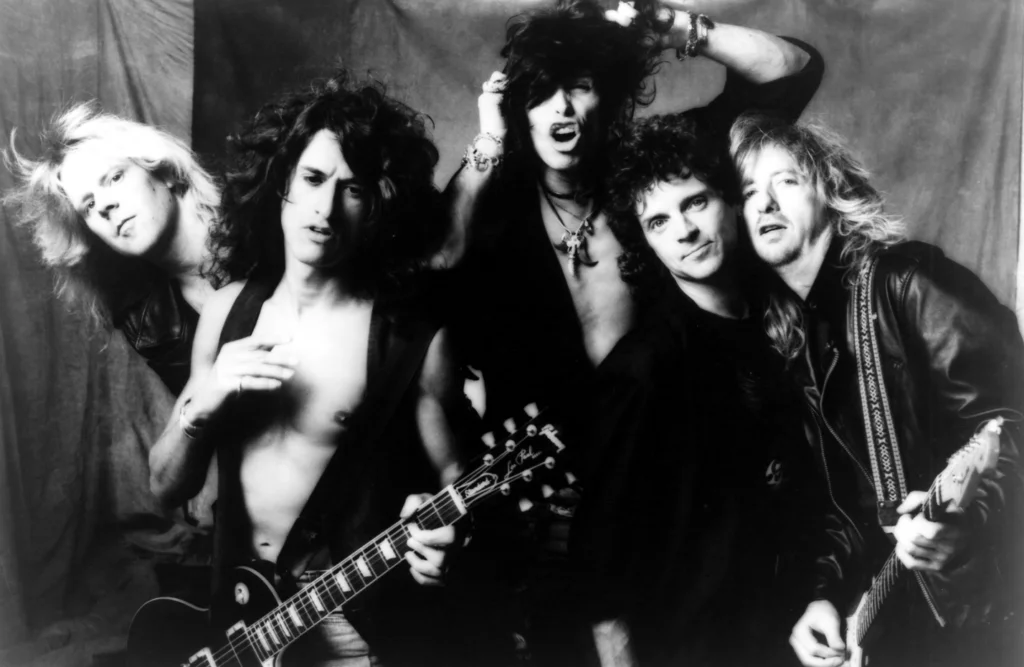
When Run-DMC and Aerosmith literally broke through the wall separating them in the “Walk This Way” video, they weren’t just creating a memorable visual—they were dramatically illustrating the demolition of barriers between rock and hip-hop. Director Jon Small brilliantly visualized the musical collaboration by showing Run-DMC in a studio, irritated by the rock band’s loud music coming through the wall, before Joseph “Run” Simmons crashes through the barrier during Steven Tyler’s iconic chorus. The revolutionary collaboration introduced hip-hop to resistant rock fans and exposed Run-DMC to a massive new audience, with MTV playing a crucial role by giving the video heavy rotation at a time when rap was still largely absent from the channel.
The video’s most powerful moment comes when Tyler and DMC share the microphone, a visual representation of musical worlds colliding that gave viewers permission to embrace both genres. The collaboration revitalized Aerosmith’s career while elevating Run-DMC to mainstream superstardom, eventually helping their album “Raising Hell” become the first rap LP to go multi-platinum. MTV’s constant rotation of the video throughout 1986 and 1987 helped convince a generation of rock fans that hip-hop deserved their attention and respect—a seismic shift in American musical culture that can be traced directly to the moment that wall came tumbling down on MTV.
6. The Launch of “120 Minutes” (1986)
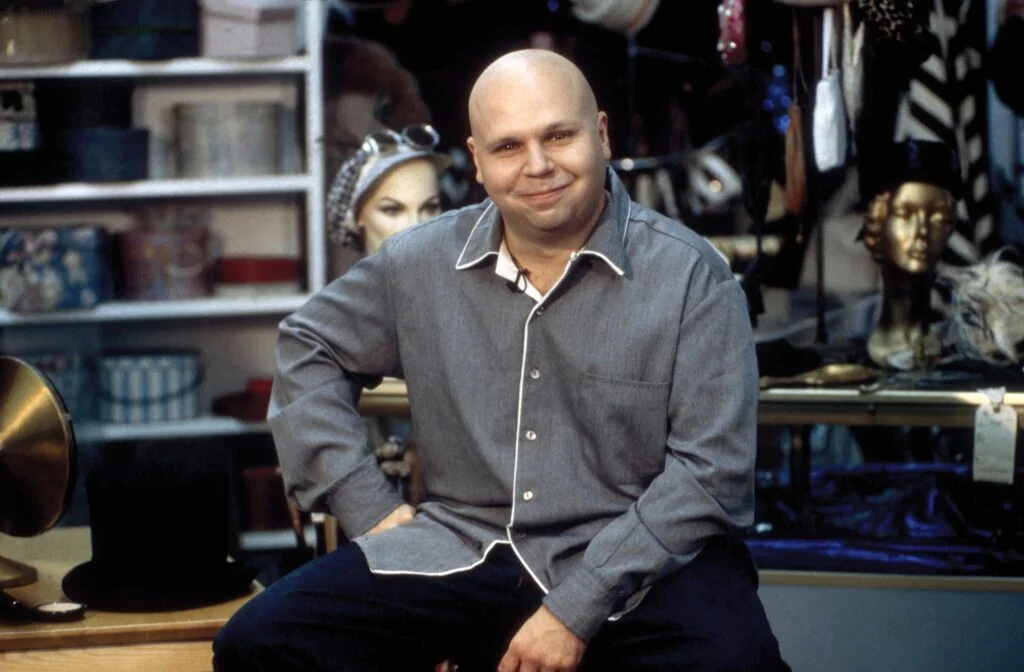
When MTV debuted “120 Minutes” in 1986, dedicated entirely to alternative and post-punk music that rarely received daytime rotation, it created a lifeline for suburban teenagers hungry for sounds beyond the mainstream. The late Sunday night two-hour block became sacred viewing for a generation of music fans who would set VCRs to record while they slept, ensuring they wouldn’t miss videos from bands like The Cure, Siouxsie and the Banshees, The Smiths, and R.E.M. For countless American teenagers isolated in communities where alternative culture was barely recognized, the show’s existence validated their musical tastes and provided crucial evidence they weren’t alone in their appreciation for more challenging artistic expressions.
Original host Dave Kendall brought British sensibilities and encyclopedic knowledge to the program, lending credibility to MTV’s alternative offerings at a time when the network was often criticized for prioritizing image over substance. The show’s distinctive visual aesthetic—featuring darker imagery, artistic experimentation, and fashion that differed radically from daytime MTV—created a sense of countercultural community that transcended geographic limitations. “120 Minutes” didn’t just showcase music videos; it introduced an entire alternative sensibility that influenced fashion, art, and attitude for a generation of viewers who would eventually bring these once-fringe tastes into the mainstream during the alternative explosion of the early 1990s.
7. The Premiere of “Sledgehammer” by Peter Gabriel (1986)
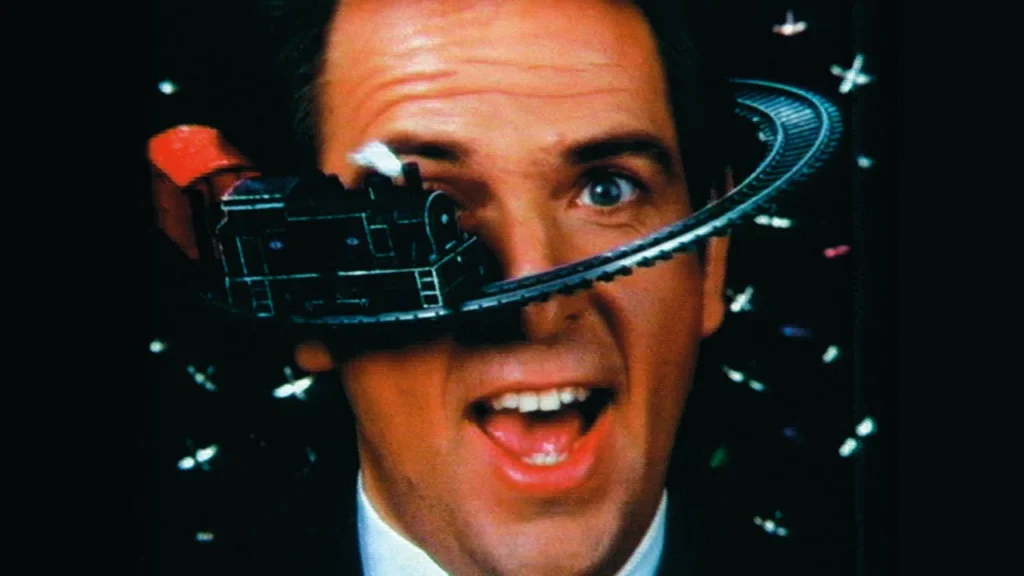
When Peter Gabriel’s “Sledgehammer” video debuted, featuring groundbreaking stop-motion animation and surrealist imagery created by Aardman Animations (who would later create Wallace and Gromit), it instantly set a new standard for what music videos could achieve as an art form. The painstakingly created visual feast—which required Gabriel to lie under a glass sheet for 16 hours while animators worked frame by frame—featured dancing chickens, bumper cars, animated fruit, and claymation figures that pushed the medium beyond simple performance footage into the realm of high art. MTV placed the video into heavy rotation, recognizing its technical brilliance and crowd-pleasing creativity, and viewers would stop whatever they were doing whenever it appeared on screen, knowing they were witnessing something revolutionary.
The video went on to win a record-breaking nine MTV Video Music Awards and remains the most played clip in MTV history—a testament to its perfect marriage of technical innovation and pure entertainment value. Gabriel’s willingness to endure the physically uncomfortable filming process, remaining motionless for long stretches while only his eyes could move, resulted in seamless integration of his image with the animated elements in ways that seemed magical to viewers accustomed to more straightforward videos. “Sledgehammer” raised audience expectations permanently, demonstrating that music videos could be legitimate short films with artistic merit beyond simply promoting a song—a watershed moment that influenced countless videos that followed.
8. The First MTV Spring Break Coverage (1986)
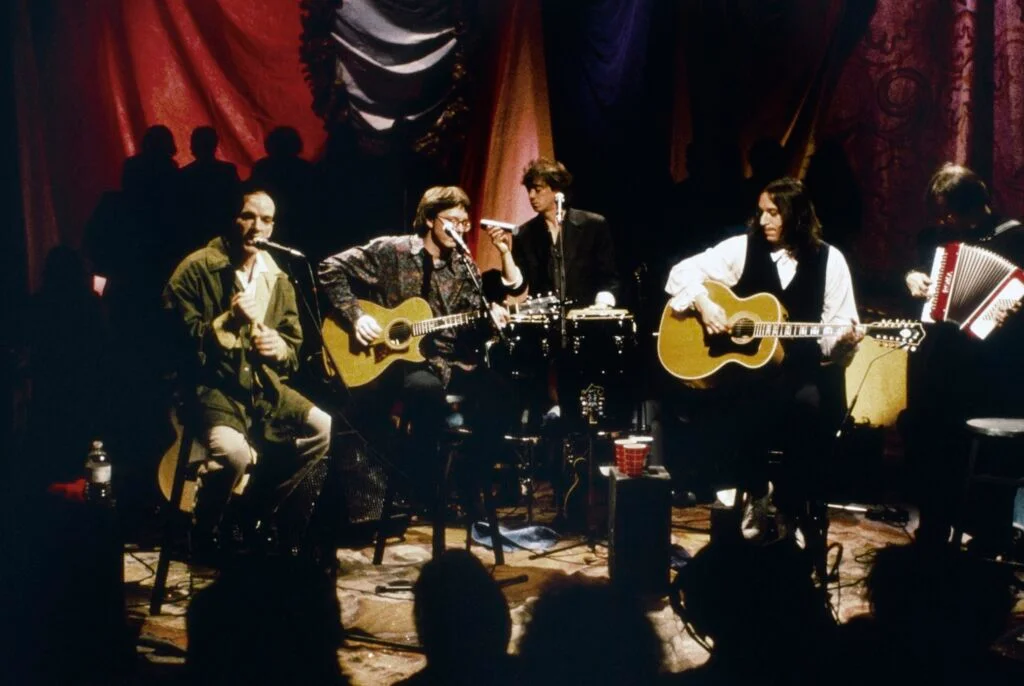
When MTV took its cameras to Daytona Beach for the first Spring Break special in 1986, it transformed a regional collegiate tradition into a national youth cultural phenomenon that defined how millions of teenagers expected their future college experiences to unfold. Hosted by VJs including Downtown Julie Brown and Alan Hunter, the broadcasts featured concert performances, bizarre contests involving whipped cream and swimwear, and endless footage of enthusiastic college students engaged in the kind of behavior that made parents across America suddenly concerned about their tuition investments. The programming created a new television genre that perfectly aligned with MTV’s youth-oriented brand—part concert, part game show, part voyeuristic glimpse into the seemingly consequence-free world of collegiate revelry.
The broadcasts became instantly iconic for their sun-soaked aesthetic and energetic atmosphere, with thousands of students clamoring to be part of MTV’s manufactured version of the ultimate collegiate experience. High school viewers watched with a combination of fascination and anticipation, while college students began planning spring break trips specifically to locations where MTV would be filming, hoping for their moment of cable TV fame. The coverage established a template that MTV would refine for decades, creating an aspirational vision of youth culture that millions of viewers attempted to emulate—regardless of whether the reality of their own spring break experiences could ever match the carefully curated version presented on television.
9. The First “Remote Control” Game Show (1987)
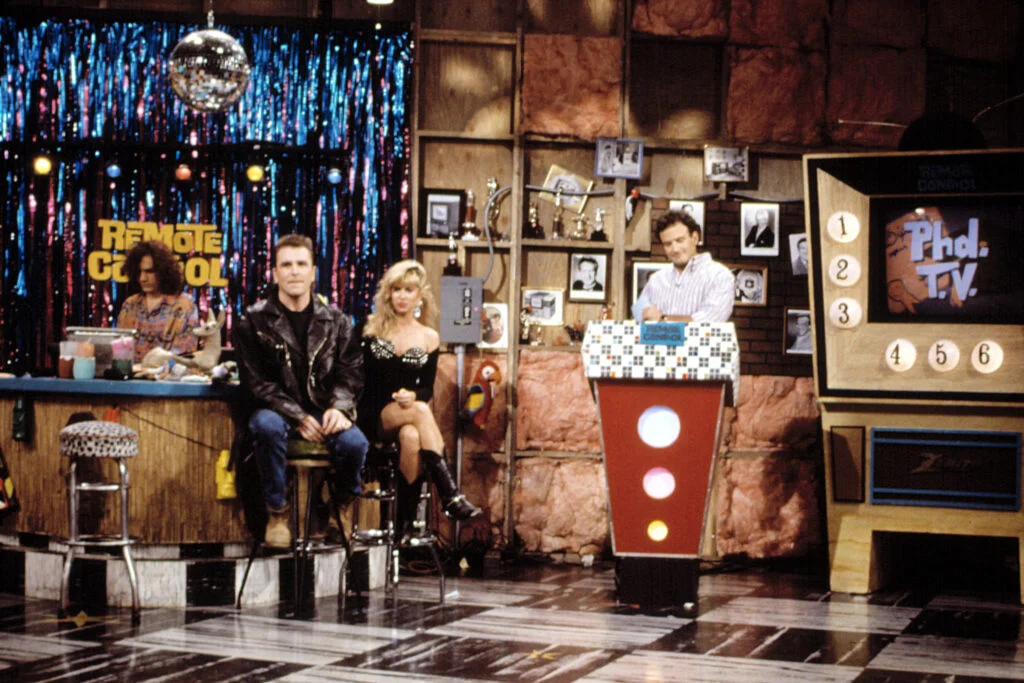
When MTV launched “Remote Control” in 1987, it created the network’s first original non-music programming and established a distinctly MTV approach to television that would influence game shows for decades to come. Hosted by Ken Ober with sidekick Colin Quinn, the show featured college student contestants sitting in recliners answering pop culture questions in categories like “Brady Physics” and “Dead or Canadian,” with a irreverent sensibility that felt nothing like traditional game shows. The basement rec room set, complete with snack-filled refrigerator and laundry chutes through which losing contestants were unceremoniously eliminated, perfectly captured the sarcastic Generation X sensibility that would come to define much of MTV’s most successful programming.
“Remote Control” introduced viewers to future stars including Adam Sandler (who performed oddball songs while dressed as Stud Boy) and Denis Leary (who appeared in the “Sing Along with Denis” category), helping establish MTV as a launching pad for comedy careers beyond its musical foundations. The show’s success proved that MTV’s audience would embrace original programming that reflected their sensibility, gradually opening the door for the network’s eventual shift away from music videos toward reality shows and scripted programming. For viewers accustomed to the relatively straightforward format of music videos, “Remote Control” represented MTV’s first major step toward becoming a youth lifestyle network rather than simply a music channel—a transformation that would completely reshape television in the following decades.
10. MTV News Coverage of the Challenger Disaster (1986)
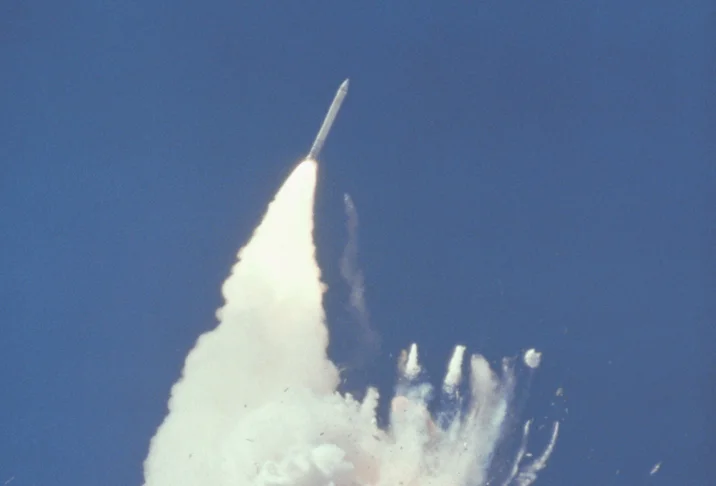
When the Space Shuttle Challenger exploded 73 seconds after liftoff on January 28, 1986, MTV interrupted its regular programming to provide news coverage—a decisive moment that demonstrated the network had become more than just a music channel but a primary information source for young viewers. While established news networks had more resources and experienced journalists, MTV’s coverage spoke directly to its youthful audience, many of whom had watched the launch in school classrooms because teacher Christa McAuliffe was aboard as part of NASA’s “Teacher in Space” program. VJ Mark Goodman delivered the news with an emotional gravity that acknowledged the special connection many young viewers felt to this particular mission, signaling that MTV understood its responsibility extended beyond entertainment to helping its audience process a national tragedy.
The coverage marked an important maturation moment for both MTV and its viewers, who were experiencing one of the first major national tragedies of their conscious lifetimes. MTV’s decision to pause music videos and provide continual updates throughout the day reflected an understanding that their audience was turning to them not just for entertainment but for information and even emotional guidance during a moment of collective shock. This brief transformation into a news source foreshadowed MTV’s later evolution into covering politics and social issues through programs like “Choose or Lose,” establishing that the network could and would address serious topics when circumstances demanded—a significant expansion of its cultural role beyond music videos.
11. The Monkees Marathon/Revival (1986)
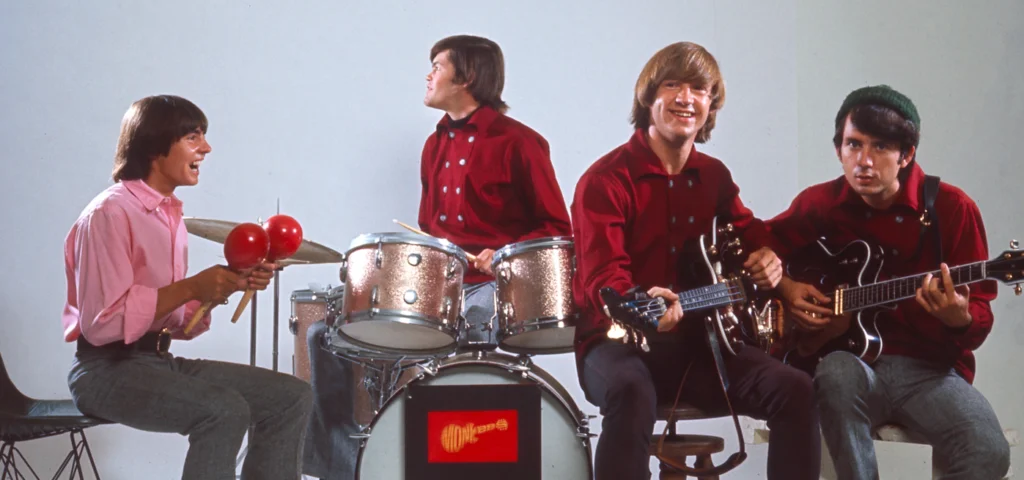
When MTV aired a weekend-long marathon of “The Monkees” television series in February 1986, network executives expected modest viewership for the 1960s program—but instead sparked an unexpected full-scale Monkees revival that demonstrated the network’s extraordinary power to resurrect cultural phenomena. The marathon generated such overwhelming audience response that MTV quickly scheduled a second marathon, while Monkees albums returned to music store shelves and original members Davy Jones, Peter Tork, and Micky Dolenz (minus Michael Nesmith) reunited for a 20th-anniversary tour that became one of the highest-grossing tours of 1986. For younger viewers who had never seen the show during its original run, The Monkees seemed like an exciting new discovery rather than their parents’ pop culture, creating an unusual cross-generational moment where teenagers and their parents could momentarily share enthusiasm for the same music.
The revival demonstrated MTV’s unique ability to create instant cultural phenomena through concentrated exposure, essentially rewriting music history by elevating The Monkees from footnote status back to cultural relevance through strategic programming. Record stores reported selling more Monkees albums in the months following the MTV marathon than they had in the previous decade, while the band’s new single “That Was Then, This Is Now” reached the Billboard Top 20—an almost unprecedented comeback for a group considered a manufactured 1960s novelty. The Monkees revival represented an early example of MTV’s capacity for cultural recycling and recontextualization, establishing a template the network would repeatedly use to breathe new life into forgotten cultural artifacts throughout its history.
12. Guns N’ Roses Unedited “Welcome to the Jungle” (1988)

When MTV finally agreed to play Guns N’ Roses’ “Welcome to the Jungle” video—initially just once, during overnight hours—they inadvertently launched one of rock’s most controversial and successful bands into the mainstream. The gritty video depicted lead singer Axl Rose as a naive newcomer corrupted by Los Angeles, incorporating footage of the band’s raw live performances with scenes suggesting the dark underbelly of Hollywood. The viewer response was so immediate and overwhelming that MTV quickly moved the video into regular rotation, helping propel Guns N’ Roses’ debut album “Appetite for Destruction” from modest sales to eventual diamond certification (over 18 million copies in the US alone).
The video’s unflinching portrayal of a dangerous, seedy rock lifestyle stood in stark contrast to the more polished hair metal bands dominating MTV at the time, signaling a shift toward grittier, less manufactured rock that would accelerate in the coming years. For teenage viewers accustomed to carefully choreographed videos, the apparent authenticity of Guns N’ Roses—sweaty, chaotic, and seemingly one step away from genuine danger—represented something thrillingly real breaking through MTV’s increasingly glossy surface. The band’s rapid ascension from late-night curiosity to mainstream phenomenon demonstrated that despite MTV’s growing corporate structure, the network could still be ambushed by genuine cultural forces that connected with viewers looking for something beyond the increasingly formulaic videos dominating daytime playlists.
For children of the ’80s, these MTV moments weren’t just television—they were shared cultural experiences that shaped tastes, attitudes, and perspectives in ways previous generations couldn’t comprehend. In an era before the internet fragmented media consumption into countless individualized streams, MTV provided a common visual language and set of references that unified youth culture across geographic and demographic lines. While today’s audiences might struggle to imagine the impact of these broadcast moments, those who experienced them firsthand remember the genuine excitement of witnessing cultural history unfold in real time—the breathless phone calls to friends ensuring they were watching too, the next-day discussions analyzing every detail, and the understanding that popular culture would never be quite the same again.


